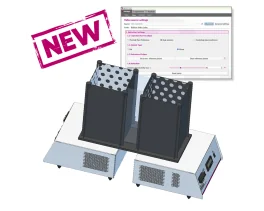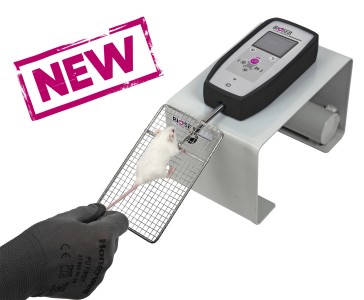Authors
J. J. Luszczki, J. Z. Wu, G. Raszewski, S. J. Czuczwar.
Lab
Medical University, Department of Pathophysiology, and Institute of Agricultural Medicine, Department of Physiopathology, Lublin, Poland.
Journal
Naunyn-Schmiedeberg's Archives of Pharmacology
Abstract
The aim of this study was to characterize the pharmacodynamic, pharmacokinetic, and adverse-effect profiles of retigabine (RTG) in combination with carbamazepine (CBZ), lamotrigine (LTG), and valproate (VPA). The isobolographic analysis for parallel and nonparallel dose–response effects was used in the mouse maximal electroshock seizure (MES) model for evaluation of pharmacodynamic interaction. Potential adverse-effect profiles of interactions of RTG with CBZ, LTG, and VPA at the fixed ratio of 1:1 in the MES test were evaluated in the chimney (motor performance), passive avoidance (long-term memory), and grip strength (muscular strength) tests. Free plasma and total brain concentrations of CBZ, LTG, and VPA were determined by immunofluorescence and chromatography to assess pharmacokinetic interaction. In the MES model, RTG administered singly had its dose–response relationship curve (DRRC) parallel to that for VPA and nonparallel to that for CBZ and LTG. With isobolography for parallel DRRCs, the combination of RTG with VPA at fixed ratios of 1:3, 1:1, and 3:1 exerted supraadditive (synergistic) interaction. Isobolography for nonparallel DRRCs revealed that the combinations of RTG with CBZ and LTG at the fixed ratio of 1:1 produced additive interaction. In all combinations, neither motor coordination, long-term memory, nor muscular strength were affected. Only the combination of RTG with VPA at the fixed ratio of 3:1 was complicated by a pharmacokinetic increase in both free plasma and total brain VPA concentrations. All remaining combinations of RTG with VPA, CBZ, and LTG were pharmacodynamic in nature. RTG synergistically interacted with VPA and exerted additive interaction with CBZ and LTG in the mouse MES model.
BIOSEB Instruments Used
Grip strength test (BIO-GS3)
Source :
http://www.springerlink.com/content/m5551406u07kp5v6/abstract/

 Pain - Thermal Allodynia / Hyperalgesia
Pain - Thermal Allodynia / Hyperalgesia Pain - Spontaneous Pain - Postural Deficit
Pain - Spontaneous Pain - Postural Deficit Pain - Mechanical Allodynia / Hyperalgesia
Pain - Mechanical Allodynia / Hyperalgesia Learning/Memory - Attention - Addiction
Learning/Memory - Attention - Addiction Physiology & Respiratory Research
Physiology & Respiratory Research











![Dynamic Weight Bearing 2.0 – Postural Module [Add-on]](https://bioseb.com/733-home_default/dynamic-weight-bearing-20-add-on-postural-module.jpg)
























 Pain
Pain Central Nervous System (CNS)
Central Nervous System (CNS) Neurodegeneration
Neurodegeneration Sensory system
Sensory system Motor control
Motor control Mood Disorders
Mood Disorders Other disorders
Other disorders Muscular system
Muscular system Joints
Joints Metabolism
Metabolism Cross-disciplinary subjects
Cross-disciplinary subjects CONFERENCES & MEETINGS
CONFERENCES & MEETINGS 